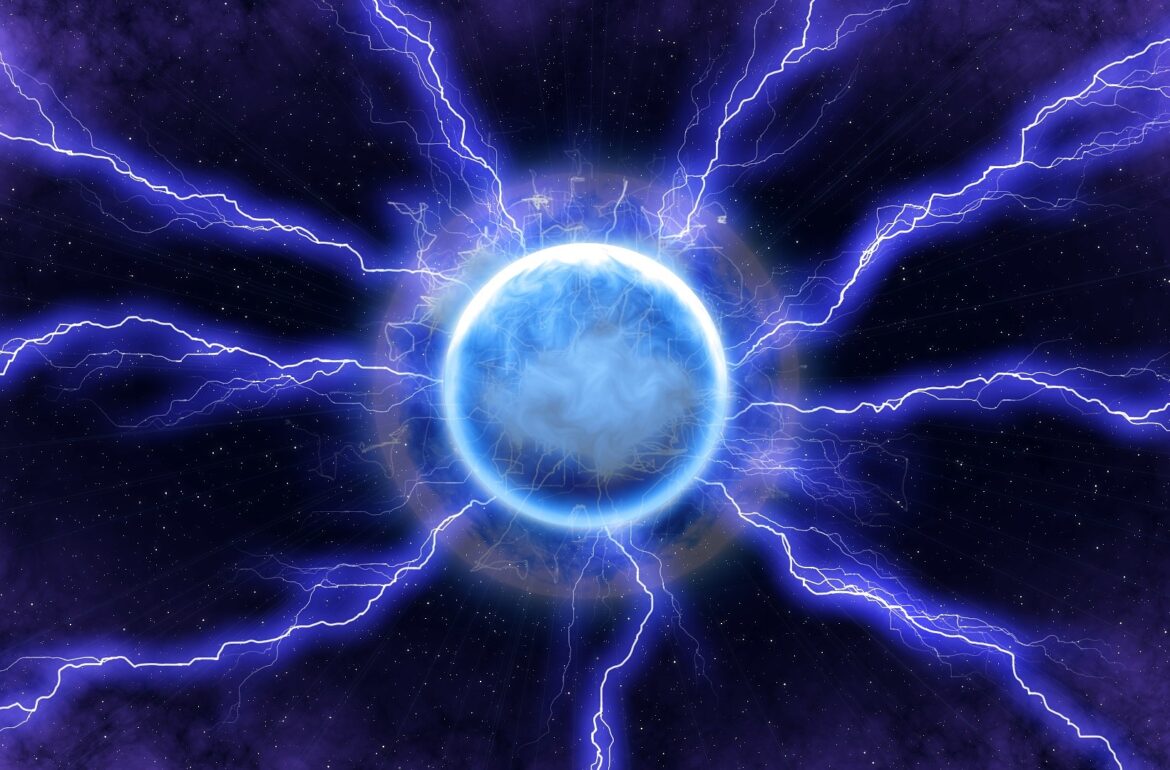Table of Contents
TalTech unveils the residential DC Innovation Hub
And like that, the doors were opened. It was the 27th of May in Tallinn, which happened to be a hot and sunny late spring day with the temperature hovering around 29 degrees Celsius. As such, it was perhaps a good idea that Dmitri Vinnikov, head of the Power Electronics Group at Tallinn University of Technology (TalTech) brought his sunglasses. Vinnikov and a team of maybe a dozen fellow scientists clad in green t-shirts were on hand for the Open Doors Day of the TalTech Residential DC Innovation Hub. The hub, a facility located on TalTech’s campus, was developed by TalTech’s Power Electronics Group to showcase the potential of using direct current (DC) technologies, which they maintain can improve energy performance and reduce lifecycle costs of residential buildings.
“By 2050, the EU is expected to become the first climate-neutral block, where electricity will be the dominant energy carrier for the buildings,” said Vinnikov. “Power electronics is the critical technology enabling energy transition. We expect to make a breakthrough in the fields of energy-efficient and sustainable electrification for zero-emission buildings,” he added.
“If you look at energy consumption in the European Union, buildings are around 40 percent,” said Andrii Chub, a researcher in Vinnikov’s group, noting that about two-thirds of that energy goes to domestic hot water, space heating and cooling. “One of the biggest issues is not only achieving the highest class of energy performance but also electrifying building thermal energy demand with heat pumps,” said Chub, who was also present at the opening.
“Considering that the EU wants to support the construction of zero-emission buildings that don’t rely on fossil fuels starting 2030, electrification has emerged as a solution, albeit one that will require additional innovation,” he added.
Advantages of DC Technology in residential buildings
Most household electricity is currently provided by alternating current (AC) utility grids, the technology that has been used for over 100 years. Current building electrification efforts based on AC technology have shown sizable improvement in the energy performance of buildings, overshadowed by AC grid power quality and congestion issues they create. The ever-increasing number of residential photovoltaic (PV) installations, electric vehicle chargers, and fast deployment of heat pumps has put a serious strain on the existing electric grids, the researchers said. They maintain that a “smarter and more resilient way” is to generate, store, and use renewable energy on-site, avoiding a detrimental impact on the utility AC grid, and minimizing energy conversion losses.

“The DC power distribution we are promoting today has been known as long as AC, since the ‘War of Currents‘ between Nikola Tesla and Thomas Edison in the late 19th century. However, the other technologies were not ready for its massive deployment 100 years ago,” said Vinnikov. “However, with rapid progress in semiconductor technologies and material science, DC has become feasible and quickly adopted in electromobility, industry, telecom, and aerospace. Our mission today is to introduce the DC technology as a beneficial electrification technology for buildings and neighborhoods,” he added.
According to TalTech’s researchers, by switching to DC, households could save up to 20 percent of their energy costs. This would also have an impact on the use of raw materials to boot, as there would be less of a need to use the copper, aluminum, and iron that are used in wires and transformers. Also, the DC technology facilitates much easier integration and efficient use of energy storages and EVs, they said, which are paramount in enhancing energy resilience and building independence from utility grid issues.
According to Vinnikov, his group’s interest in DC buildings originated a decade ago, when the Centre of Excellence for Zero Energy and Resource Efficient Smart Buildings was established at TalTech. For the duration of the project, efforts were focused mainly on creating building materials that would minimize energy loss, but Vinnikov’s group also understood that by modifying the electrical system of buildings, they could improve their efficiency even more, especially since there was an EU-wide push to see more PV modules installed on the rooftops of buildings.
“We expect our solutions to be scalable, affordable, and user-friendly and create benefits to the end-users, increase interest in the technologies, reduce the use of grid infrastructure, and contribute to the energy transition goals,” said Vinnikov.
All of this work culminated in the appearance of the hub at the TalTech premises late last year. It’s just as much a demo center as a living lab. There’s enough room inside for two students or postdocs to work, as it’s thermally insulated for year-round operation which in Estonia, where temperatures can easily drop below 20 degrees Celsius in the winter months, is essential. The hub has a 350V±30V DC droop-controlled DC microgrid, features a heat pump fed from DC, and is adorned with a solar facade and solar modules installed on the roof. It also has LED lighting fed by DC, battery energy storage, and hosts various DC appliances.
The hub now serves multiple purposes. One is to complement efforts within TalTech to make its campus climate neutral over the next decade. It’s also the first so-called DC Experience Center in Northern Europe, which makes it a destination for anyone interested in power electronics and a full-electric lifestyle. Stepping inside, one can see first-hand how different technologies are powered by DC. The hub runs on the interoperable DC ecosystem being developed by Current/OS Foundation – the world-leading industrial DC consortia.
Collaboration and commercial potential
But the intended audience is not only the curious, but the commercial. The scientists behind the hub are eager to work with green energy companies to see their technologies deployed in real world settings. One apparent use case is in housing, where the installation of DC microgrids could alter residential power supply principles, optimize power flows, and increase overall efficiency, making buildings future-proof.
The vision of the TalTech researchers is to support the move to DC and away from AC inside houses, while pairing that with the use of renewable energy, such as the aforementioned PVs and heat pumps. According to Chub, the team is also at work developing a set of technologies that could find use in DC settings. “We want to develop five to 10 minimally viable prototypes that can become commercial products when DC buildings become a business case in the near future,” Chub commented. These could be tools for integrating PVs, batteries or light, in a DC context, Chub said. They are also looking at partnering with makers of prefabricated houses and local electronics firms to see if they could eventually sell homes with DC microgrids.

At Open Doors Day, TalTech also presented its i³DC trademark, which TalTech owns and uses to promote DC technologies. In 2021, TalTech together with Ubik Solutions, a Tallinn-based firm focused on power conversion and energy management, launched the i3DC Initiative to support DC uptake. These kinds of academic-private partnerships seem to be the path forward. Some commercial partners who have supported the hub include DC Systems – a Schneider Electric endorsed company headquartered in The Netherlands, Sunly, the Estonian renewable energy company, and VOOL, a Tallinn-based electronics manufacturer, among others.
“The increasing demand for electricity calls us to think beyond traditional methods and explore sustainable solutions that can meet our energy needs. Direct Current has the potential to address these needs effectively,” That is why DC Systems by Schneider Electric was thrilled to cooperate with the innovative Power Electronics Group of TalTech on the Residential DC Innovation Hub project, in close collaboration with the Current/OS Foundation – the leading DC community. The recent Open Doors Day illustrated the immense potential of Direct Current, highlighting its importance in creating sustainable and efficient energy solutions. Together, we will continue to empower the future,” said Ahmad Makkieh, EU DC Project Manager, Schneider Electric.
Future goals and support for DC Technology
“The recent Open Doors Day illustrated the immense potential of Direct Current, highlighting its importance in creating sustainable and efficient energy solutions,” he said. “Together, we will continue to empower the future.”
According to Chub though, EU standards for DC technologies are needed before there can be more widespread adoption. He said that the International Electrotechnical Commission is at work on several families of standards that, once adopted, will clear the way for transition.
“We expect the market will explode from 2030,” said Chub. “Our goal is to develop sufficient knowledge and technologies to be ready when market demand for DC increases,” he said.
As for the TalTech Residential DC Innovation Hub? It will be continuously developed as a part of the 2035 strategic plan of TalTech toward a climate-neutral campus while serving the high demand for knowledge and human resources in the DC field.
“We are grateful to the Estonian Research Council and the Ministry of Education and Research of Estonia. Their long-term support enables sustainable development of innovative cleantech technologies in Estonia,” Vinnikov underscored.
The hub was established with funding from the Estonian Research Council (project PRG1086 “Future-Proof Power Electronic Systems for Residential Microgrids”). It is also supported via the newly established Estonian Center of Excellence on Energy Efficiency, which has been funded for the next seven years, meaning the hub will exist well into the next decade.
This article is written by Justin Petrone. This article was funded by the European Regional Development Fund through Estonian Research Council.
 Back
Back



